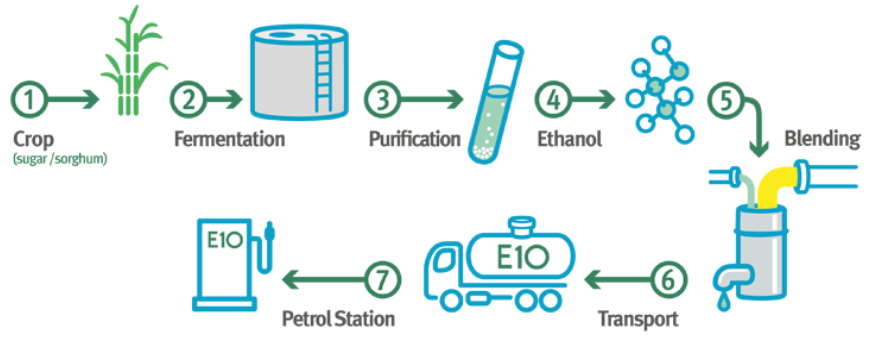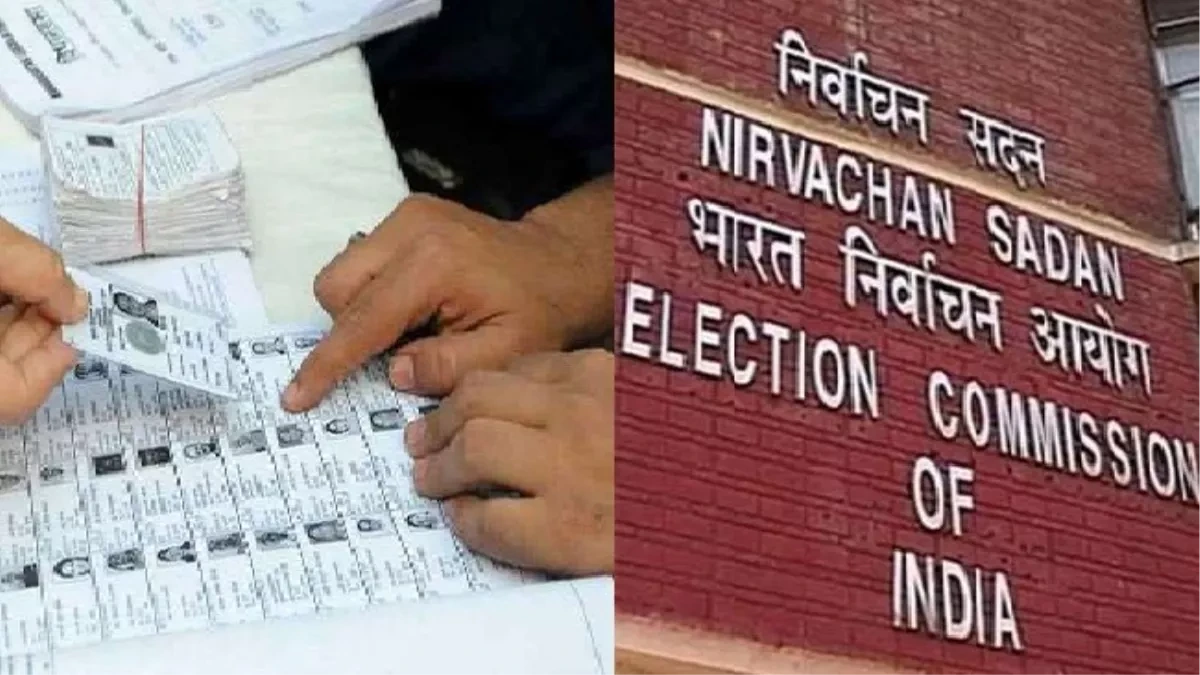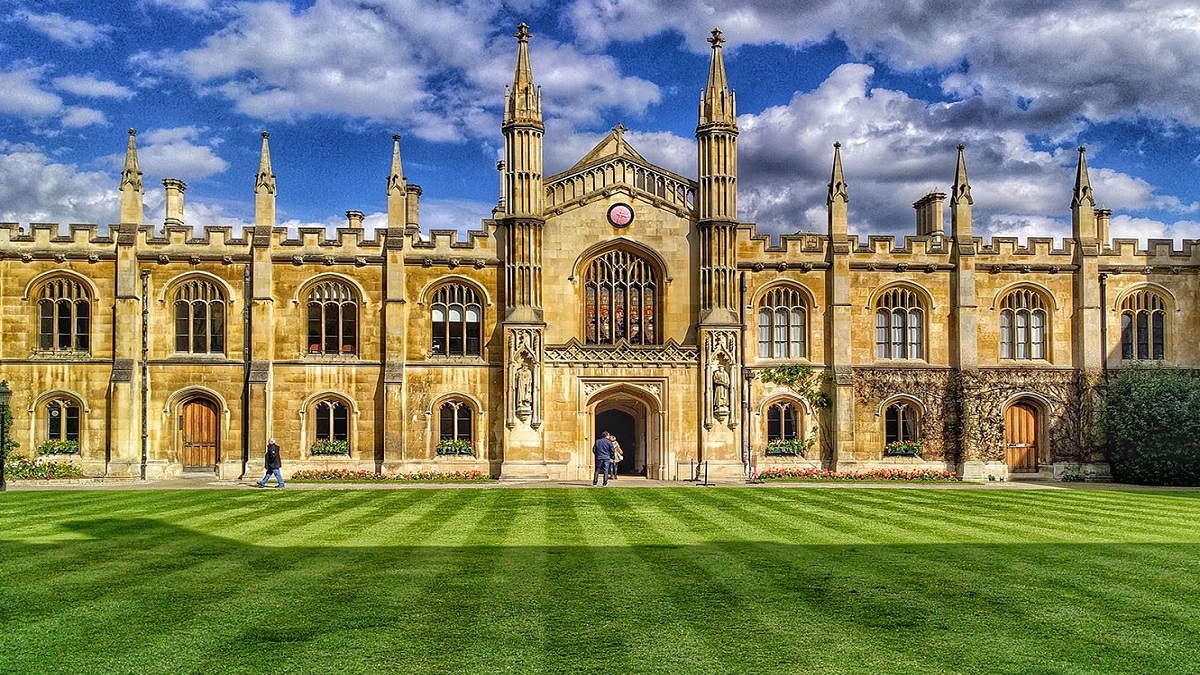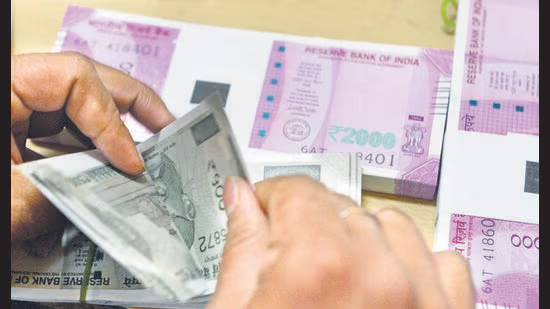- Courses
- GS Full Course 1 Year
- GS Full Course 2 Year
- GS Full Course 3 Year
- GS Full Course Till Selection
- Answer Alpha: Mains 2025 Mentorship
- MEP (Mains Enrichment Programme) Data, Facts
- Essay Target – 150+ Marks
- Online Program
- GS Recorded Course
- Polity
- Geography
- Economy
- Ancient, Medieval and Art & Culture AMAC
- Modern India, Post Independence & World History
- Environment
- Governance
- Science & Technology
- International Relations and Internal Security
- Disaster Management
- Ethics
- NCERT Current Affairs
- Indian Society and Social Issue
- NCERT- Science and Technology
- NCERT - Geography
- NCERT - Ancient History
- NCERT- World History
- NCERT Modern History
- CSAT
- 5 LAYERED ARJUNA Mentorship
- Public Administration Optional
- ABOUT US
- OUR TOPPERS
- TEST SERIES
- FREE STUDY MATERIAL
- VIDEOS
- CONTACT US
ETHANOL 100 FUEL
ETHANOL 100 FUEL
18-03-2024
Recently, the Union Minister of Petroleum & Natural Gas and Housing & Urban Affairs launched 'Ethanol 100', a revolutionary automotive fuel at IndianOil retail outlets.

What is ETHANOL 100 Fuel
- It has a high-octane rating, typically between 100-105.
- Ideal for high-performance engines, ensuring better efficiency and power output while reducing environmental impact.
- Versatile, can be used in a wide range of vehicles, including flex-fuel vehicles (FFVs).
- Practical and has the potential to become a mainstream fuel option.
- Consists of 93-93.5 percent ethanol mixed with 5 percent petrol and 1.5 percent co-solvent.
- Clean, green alternative to gasoline, claiming to emit less greenhouse gases and pollutants.
What are flex-fuel vehicles?
- They are designed to run on a variety of fuels.
- These are equipped with an internal combustion engine (ICE) that can run on petrol or ethanol or methanol, giving consumers a choice in terms of fuel sold.
- Apart from a few modifications, flex fuel vehicles are identical to petrol-only cars.
Q1) What is Octane number?
Also called octane value or octane rating, it is one of the important measures of gasoline performance. It is a measure of the fuel's resistance to knocking or premature ignition.
Ethanol Blended Petrol Programme: Ethanol Blending, Advantages and E20 Fuel
- The Ethanol Blending Programme was launched by the Indian government in 2003 and has since been implemented in various phases to promote ethanol-blended petrol as an alternative to conventional petrol.
- Under this programme, a certain percentage of ethanol is blended with petrol to reduce the consumption of fossil fuels and curb carbon emissions.
- According to the National Policy of Biofuels-2018, India plans to blend 20% ethanol into petrol and 5% biodiesel into diesel by 2030
- However, in 2022, encouraged by the rapid progress of its ethanol programme,The Government has set a target of 20% blending of ethanol in petrol under the EBP programme by Ethanol Supply Year (ESY) 2025-26.
- In September 2023, India, the US, the United Arab Emirates, and Brazil launched the Global Biofuel Alliance.
- The countries agreed to provide financial and technical support to national programmes to promote the sustainable production and use of biofuels.
Ethanol Blended Petrol Programme?
- Ethanol blended with petrol to reduce fossil fuel usage and support agriculture.
- Ethanol blending program increased from E5 to E10 and aims for E20 by 2025.
- Government incentives include subsidies for ethanol production and tax exemptions for equipment.
- Ethanol blending program implemented in different phases and is nationwide by 2021.
- Ethanol can be blended with gasoline in varying concentrations, commonly E10.
- Higher ethanol concentrations, such as E15 and E85, are also available in some regions.
- E10 is the US's most common blend of gasoline and ethanol.
- Higher blends of ethanol require specially designed or flex-fuel vehicles.
Current Status of Ethanol Blending Programme in India
- Currently, the ethanol content in petrol is around 8-10%, but some places are doing better.
- The government is helping companies mix more ethanol in petrol by giving them money.
- The government wants to use more ingredients like rice, sugarcane juice and jaggery instead of corn to make ethanol.
- The government aims to achieve 10% ethanol in petrol by 2022 and plans to build 12 new factories to make ethanol from agricultural waste.
- These measures will help clean the air and reduce pollution.
- The Indian automotive industry favors ethanol blending, and several car-makers have launched flex-fuel vehicles that can run on higher percentage ethanol blends.
- Challenges faced in implementing the ethanol blending program include supply chain issues, pricing challenges, and food security in India.
Implementation of Ethanol Blended Petrol Programme
-
2001: Pilot Projects on Ethanol Blended Petrol initiated at Miraj, Manmad (Maharashtra), and Aonla/Bareilly in Uttar Pradesh.
-
January 2003: Launch of Ethanol Blended Petrol (EBP) Programme for 5% ethanol blended petrol in 9 states and 4 Union Territories.
-
September 20, 2006: MoP&NG Notification
- Directed OMCs to sell 5% Ethanol Blended Petrol in 20 states and 4 UTs from November 1, 2006.
- Additional 10 states included Delhi, Himachal Pradesh, Madhya Pradesh, Chandigarh, Kerala, Rajasthan, West Bengal, Odisha, Bihar, and Jharkhand.
- Excluded North-Eastern States, J&K, Andaman & Nicobar Islands, and Lakshadweep Islands.
- April 1, 2019: Extension of Programme
- Extended to the entire India except Andaman Nicobar and Lakshadweep islands.
- OMCs sell petrol blended with ethanol up to 10%.
- Ethanol Supply Years and Blending Targets
- 2018-19: 189 crore ltrs supplied, achieving 5% blending.
- 2019-20: Aiming for 190-200 crore ltrs to achieve 5.6% blending.
- 2020-21: Targeting 8.5% blending with 325 crore ltrs ethanol.
- 2021-22: Expected supply of over 400 crore ltrs for 10% blending.
- Government Targets
- 10% blending target by 2022.
- 20% blending target by 2025
Effect of Ethanol-Blended Fuel on the Environment
- Ethanol production emits fewer greenhouse gases and improves air quality.
- Ethanol reduces dependence on fossil fuels but raises concerns about ecosystem destruction and competition for land.
- Ethanol production requires water and can cause pollution, but sustainable practices can mitigate these impacts.
- Ethanol crops may require pesticides and fertilizers, but sustainable practices can reduce their use.
- Producing ethanol requires water and energy, but sustainable practices and renewable energy sources can lessen the environmental impact.
Advantages of Ethanol Blending
- Renewable from plants, reducing greenhouse gas emissions.
- Improves engine performance, supports rural economies, and stabilizes prices.
- Reduces dependence on foreign oil, improves air quality, and offers flexibility.
- Advanced biofuels from non-edible plant parts, safer than gasoline.
Challenges Related to Ethanol Blending
There are some problems in the use of ethanol that need to be solved.
- One problem is that the pipes and tanks used to store and distribute gasoline may not work well with ethanol. They may need to be replaced.
- Another problem is that there is not always enough corn or sugarcane, which is used to make ethanol.
- This means that obtaining enough ethanol can be difficult and the price can fluctuate significantly.
- Furthermore, ethanol does not provide as much energy as gasoline.
- This means that cars may need to be filled more often, and some cars may not work well with ethanol.
- This may mean spending more money on repairing cars.
- Ultimately, making ethanol can use a lot of water and land, which can be harmful to the environment.
What is E20 Fuel?
E20 fuel is a blend of gasoline and ethanol, with an ethanol content of 20% by volume. It is a cleaner alternative to traditional gasoline, as ethanol is a renewable and bio-based fuel that emits fewer greenhouse gases and pollutants. More details of E20 fuel are listed below:
- E20 fuel is a special type of fuel that works in cars that can use both regular gas and ethanol. It can also work in some regular cars, but sometimes they need to be changed a little.
- E20 fuel is better than regular gas because it can make your car run better and help the environment by reducing pollution.
- Some countries have mandated the use of E20 fuel in certain locations or for certain types of cars in order to make the air cleaner.
Importance of E20 Fuel
- E20 fuel is a type of fuel that can help reduce air pollution and improve air quality.
- It is made from biofuel instead of fossil fuel and is clean for the environment.
- E20 fuel has a high-performance level and can work with a variety of engines, even those that use regular gasoline.
- The use of E20 fuel can help farmers and ethanol producers generate more demand for their products and support local industries.
- It can also help meet government targets to reduce greenhouse gas emissions and promote the National Mission on Sustainable Housing.
- People who use flex-fuel vehicles can use E20 fuel to get more fuel options and reduce their dependence on regular gasoline.



